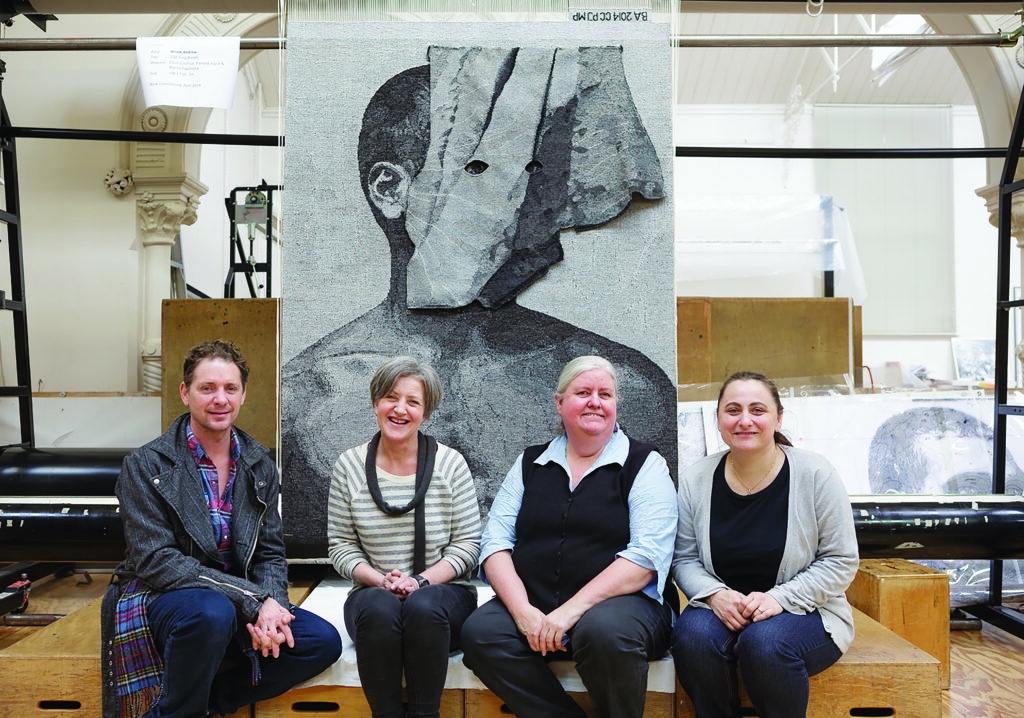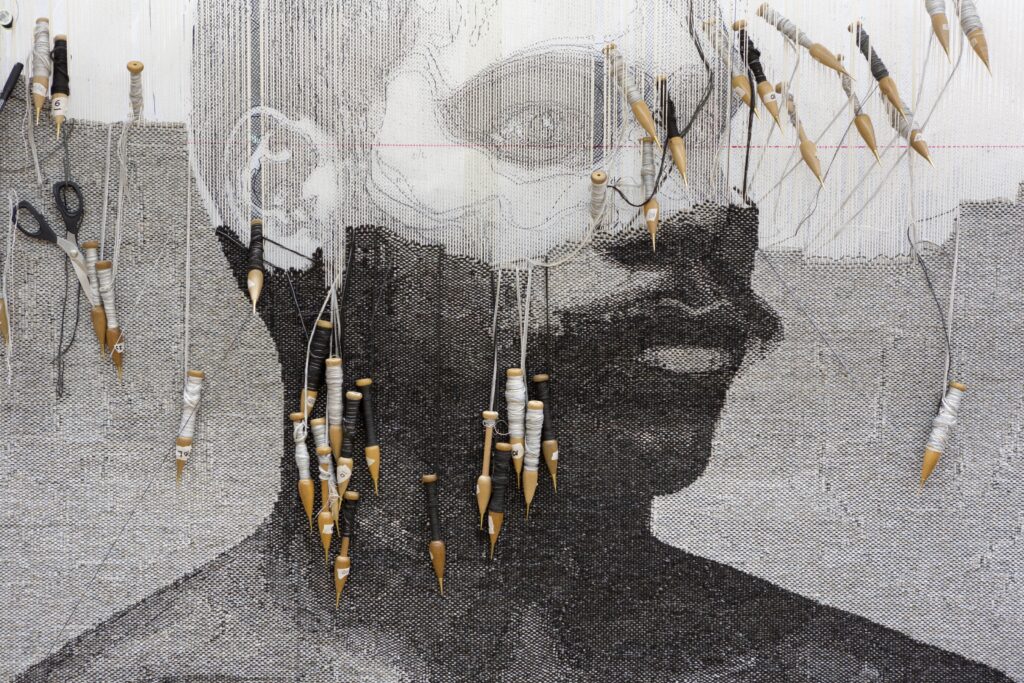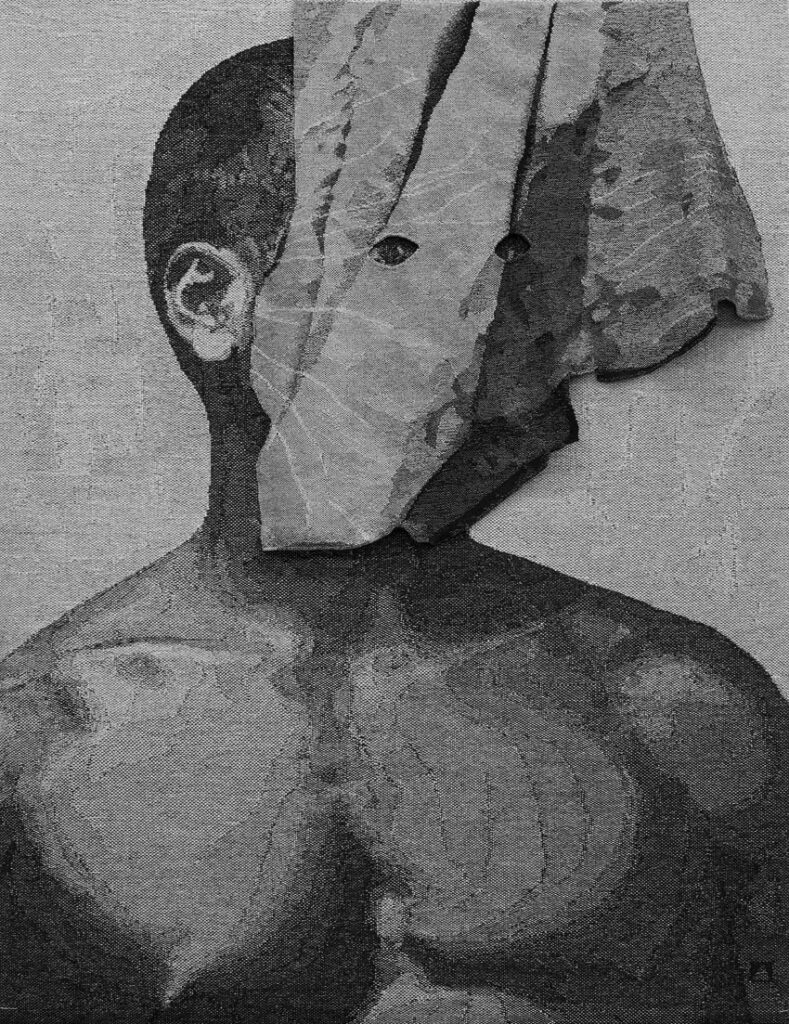Subscribe to our newsletter to keep up to date on all of our latest events, projects and news.
SubscribeThreads: Melbourne
Manchester City of Literature projectOn Translation by Chris Cochius
As a tapestry weaver, I have become increasingly interested in how to explain the process of translating an artwork into tapestry to people without the same language that we take for granted, of how we discuss our ideas and thoughts fluently amongst ourselves.
Initially and most importantly we look closely at the artwork, an act of attentive seeing that allows us to begin the interpretive process. Sampling gives us a starting point for conversations, the collaborative discussions between weavers and artists that help distil and focus the final translation. Knowledge about the size the tapestry, the budget, specific knowledge about the site where the tapestry will hang, all influence the amount of detail and the warp set we choose. These are the mechanics of our process, but how do we actually translate?
For me it is largely intuitive, of making tangible the ‘feel’ of the artwork. Looking and listening to the colour, tone, linework, contrasts, the ‘qualities‘ of the artwork. Translating is a process of thinking and making decisions, of looking at the details but never losing sight of the whole, of allowing the ‘essence’ to shine without the effort being visible. It involves trust between artist and artist weaver, and requires honesty and integrity.
Recently I have read two interesting but quite different books* that look at how a written work is translated from one language to another, and I have discovered many similarities with the way we work. We often talk about the ‘essence’ of an artwork and trying to capture that, looking at the nuances, the rhythm, the gesture. Both authors talk about ‘sense for sense’ rather than ‘word for word’ in their translation and about the shape and order of the language. They write about how they search for the best way to express the writing of another so that the voice is the same, how to put their own voice to one side so that the translation is honest and seamless.
All art is an interpretation, no matter what form or medium it takes – it is all an interpretation of an idea. Something elusive pinned down in tangible form. Our tapestries are translations of these.
* ‘This Little Art’ by Kate Briggs
‘Is That a Fish in Your Ear’ by David Bellos
The above extract is an excerpt from larger prose piece by Chris Cochius published in the Australian Tapestry Workshop’s annual magazine, Woven. You can read issues of Woven on the link below.



